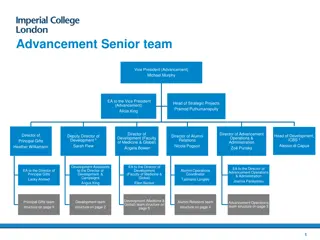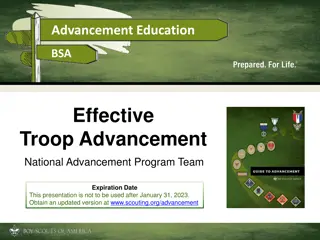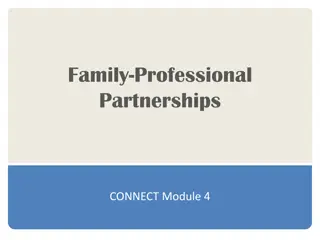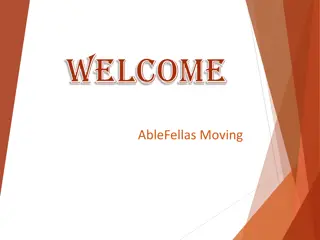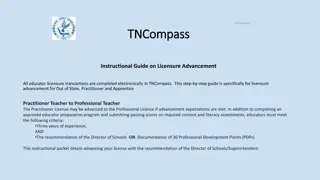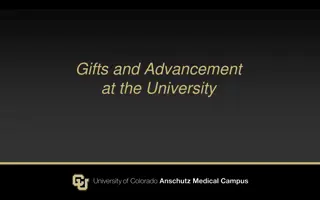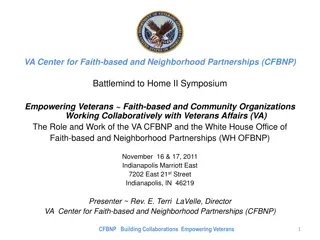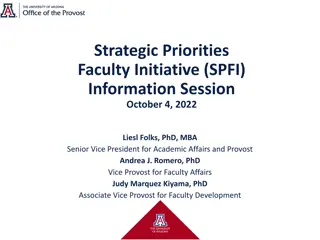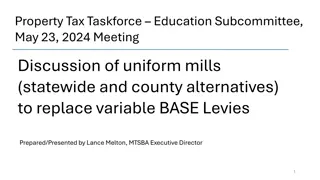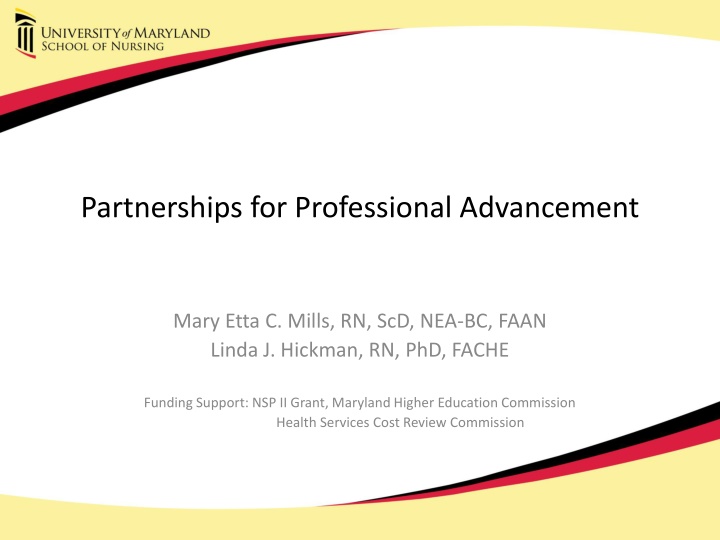
Academic-Service Partnerships for Nursing Professional Advancement
Explore the collaborative efforts of academic and service partners to advance nursing education and address workforce demands. Initiatives include academic-preparation programs, mentorship models, and hospital enhancements to support the growth and development of the nursing workforce.
Download Presentation

Please find below an Image/Link to download the presentation.
The content on the website is provided AS IS for your information and personal use only. It may not be sold, licensed, or shared on other websites without obtaining consent from the author. If you encounter any issues during the download, it is possible that the publisher has removed the file from their server.
You are allowed to download the files provided on this website for personal or commercial use, subject to the condition that they are used lawfully. All files are the property of their respective owners.
The content on the website is provided AS IS for your information and personal use only. It may not be sold, licensed, or shared on other websites without obtaining consent from the author.
E N D
Presentation Transcript
Partnerships for Professional Advancement Mary Etta C. Mills, RN, ScD, NEA-BC, FAAN Linda J. Hickman, RN, PhD, FACHE Funding Support: NSP II Grant, Maryland Higher Education Commission Health Services Cost Review Commission
Workforce Demand* Projected shortages of nurses vary across the nation MidAtlantic: 42% of RNs are over 50 yrs of age 12% growth 2009-2014 9% growth 2015-2030 projected 1%- 2% growth in FTE RN per capita *Auerbach, D.I., Burerhaus, P.I. & Staiger, D.O. (2017). How fast will the registered nurse workforce grow through 2030? Nursing Outlook, 65 (1), 116-122.
Advancing Academic Preparation of Nurses in the Workforce Academic-service partnerships with 24 hospitals over 10 years (2006- present). Purpose: Initial- MS preparation of RNs to expand clinical access in support of increased nursing student enrollments Expanded RN-BSN preparation to assist in meeting the IOM objectives of 80%
Academic- Service Partnership Model ACADEMIC University of Maryland, Baltimore School of Nursing NSP II Project Director, Academic Program Specialists Develop nursing cohort & mentorship model Recruit, admit & enroll nurses to earn BSN/MS degree Service excellence onsite for NSP II students
SERVICE Partner Medical Center Appoint NSP II Coordinator/Liaison Promote NSP II in hospital communications Provide tuition benefits and possible incentives Administrative support for NSP II students
Partnership Process Relationship building: CNO Project Directors MS Nurse Educator Academic Prgm Specialists Nurse Staff/Student
Hospital Partner Enhancements Tuition Reimbursement Support Consideration of additional post graduate role as clinical instructor, mentor, preceptor, staff educator Evaluation recognition Expanded clinical access for Schools of Nursing
Academic Enhancements One on one on-site advisement throughout academic program Special assistance with academic matters Guaranteed course availability Flexible course schedule Dual Role preparation in Leadership and Education
Evaluation Outcomes 150 MS Graduates with Leadership and Education focus over 10 years Additional 165 BSN/MS projected 45 MS currently enrolled Availability of hospital based clinical instructors has led to increased clinical rotations Schools seeking clinical rotations at partner hospitals have enrolled 13.2% more students
Graduate Survey Conducted in 2015 42 randomly selected MS graduates invited to participate Response: 22/42 = 52.4%
Demographic Characteristics Initial Nursing Degree: BSN: 77.3% (n=17) ADN: 13.6% (n=3) Diploma: 9.1% (n=2) Yrs of Experience: 6-10 yrs 27.3% (n=6) 11-14 yrs 22.7% (n=5) > 15 yrs 50.0% (n=11) Yrs with Current Employer: Range <2 to > 15 yrs Full-time position: Educator 31.8% (n=7) Clinical Staff 22.7% (n=5) Manager 27.2% (n=6) Other 18.2% (n=4)
Program Impact on Organizational and Teaching Activities Organizational Participation: Research/EBP (from 10.7% to 17.9%) Leadership and Management (from 9.3% to 17.9%) Teaching Involvement: Increased frequency of participation: CE Instructors (from 9.8% to 21.7%); School of Nursing Clinical Instructor (from 4.9% to 13.0%) Simulation-Lab Instructor ( from 7.3% to 26.1%)
Professional Maturation Notable Shifts in roles following program graduation: From - Informal staff education Formal CE instructor 25.3% - 16.7% 9.8%- 21.7% - In-unit preceptor SON Clinical Instructor 39.0% - 17.4% 4.9% - 13.0% To Simulation-lab instr. 7.3%- 26.1%
Challenges Realities of Organizations: - Meeting health environment demands - Changes in project personnel, hospital education coordinators, CNOs - Increasing competition from new and existing programs - Adequate tuition support combined with work obligations
Opportunities - Academic- service partnerships through relationship building to promote professional advancement - Creation of innovative positions built on combined practice and faculty roles - Increased enrollment in schools of nursing to meet future health care needs




